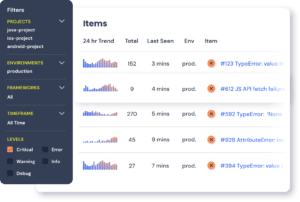j
What is Serverless Java?
Serverless Java applications use modern cloud computing to let developers focus on business logic rather than infrastructure. In a serverless environment, the infrastructure provider takes care of scaling, runtimes, resource management, security and other specifics. Concerns such as number of instances to run and which OS to use are managed by Function as a Service (FaaS) platforms, allowing developers to focus on application code.
A serverless Java setup allows developers to build and run applications on-demand, guaranteeing high availability without having to manage servers themselves. Servers still exist behind the scenes, but they are abstracted away from application development.
Serverless Application Characteristics
Serverless applications have a number of specific properties, including the following:
- Event-driven execution using triggers
- Resource management handled by the platform including starting, stopping and scaling
- Scales down to zero, with no or low cost when idle
- Stateless
A serverless Java architecture is simple to comprehend. Developers write code that performs certain operations and trigger execution in response to an event. These events could be generated by the system or the end-user. As an example, in AWS, API Gateway can be used to handle HTTP requests, Lambda to handle business logic and RedShift to store data.
Advantages of Serverless with Java
Serverless applications offer the following advantages:
- Simple delivery - Using cloud services to build a Java application and writing the smallest possible amount of code is quite an effective and attractive model. Developers are relieved from having to create boilerplate, admin and security code. Reliable and cost-effective solutions for these requirements are available from cloud providers.
- Ease of maintenance - Not only is the setup and configuration of applications made easier using serverless, their maintenance also requires less effort. Infrastructure management can be delegated to platform providers, which also includes built-in scalability and monitoring
- Reduced costs - Faster development and easier maintenance reduces the total cost of the Java application. The pricing model of cloud providers like AWS and Azure is quite attractive since users are only charged based on execution time and resource usage.
- Time to market - Since serverless is lightweight compared to traditional applications, such applications can be ready for production pretty quickly. This can help businesses beat competition and reduce costs.
- Frequent updates - Cloud providers constantly improve and upgrade their services, which are rolled out to users automatically.
Disadvantages of Serverless with Java
Serverless is an excellent tool but it's not perfect for all use cases and has its downsides. Some of these include:
- Cost Effectiveness - For a system with a high and stable workload, a serverless solution can end up being more expensive. A calculation should always be done based on the system requirements to determine whether going serverless makes sense or not. Furthermore, Java applications typically require additional memory resources when compared to its peers, as such it is advised to conduct memory usage audits to keep track of costs.
- System Integration - Serverless is a relatively straightforward approach for configuring and developing small Java applications, but it's much harder to build bigger systems. Managing such systems can lead to a number of functions interfering with each other. Big systems can be better managed with the Infrastructure as a Service (IaaS) approach as well as a proper versioning and testing strategy.
- Time limitations - Some cloud providers have limited function execution times. Generally, functions should be executed relatively quickly but in case of long-running computations or heavy I/O operations, serverless may not be the best approach. In such cases, traditional container based applications can be cheaper and faster.
- Vendor lock-ins - When running serverless Java applications, it is fairly common to choose a vendor (e.g. AWS or Azure) for most, if not all functions. This can lead to lock-ins, which means migrating away from these services is not easy or cheap. This can be prevented by using serverless frameworks that allow deployment to different clouds.
- Cold starts - VMs and containers are managed by cloud providers when going serverless. A lot of operations are performed when executing serverless code for the first time, including allocation to servers with spare resources, downloading functions, starting containers and the runtime environment (e.g. JVM). Application code is only executed after these heavy operations are performed. Unfortunately, Java runtimes and packages are typically larger than other languages, thereby incurring higher cold start latencies which might be sub-optimal for user facing code. This can be reduced by pre-warming function instances, not exposing functions to the UI and using dedicated instances. Cloud providers are also improving their services to minimize the impact of cold starts.
Use Cases of Serverless with Java
Robust serverless applications can be created using Java. In some situations, it can be the best solution, including the following:
- Library support - Java is one of the most popular programming languages. In certain industries, such as finance, most applications are built using Java. It is a possibility that an application uses libraries only available in Java. In such cases, it might be a good idea to stick with Java when going serverless.
- Existing code - If an existing application is written in Java, and the development team that has extensive experience with Java, introducing another language might be a suboptimal approach.
- GraalVM - It is possible to use GraalVM to convert Java bytecode into a native executable, that could then be executed as a FaaS. The primary advantage of this is a considerable reduction of the cold start time and memory consumption.
Track, Analyze and Manage Errors With Rollbar

Managing errors and exceptions in your code is challenging. It can make deploying production code an unnerving experience. Being able to track, analyze, and manage errors in real-time can help you to proceed with more confidence. Rollbar automates error monitoring and triaging, making fixing Java errors easier than ever. Sign Up Today!





